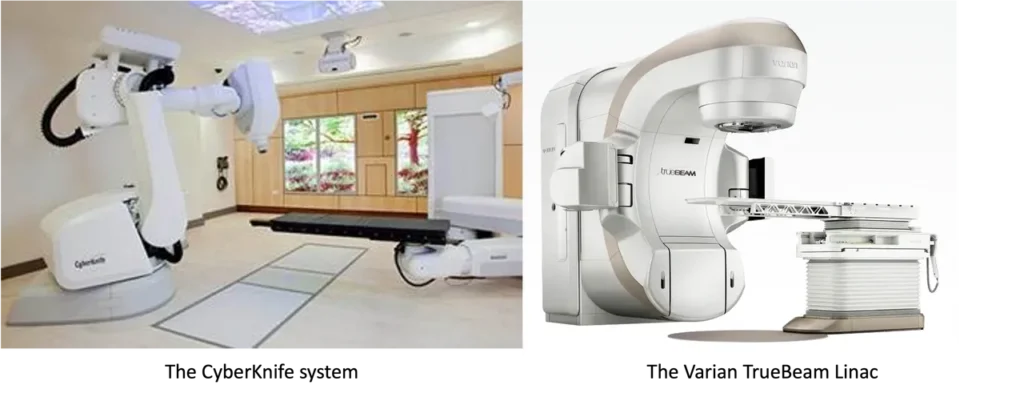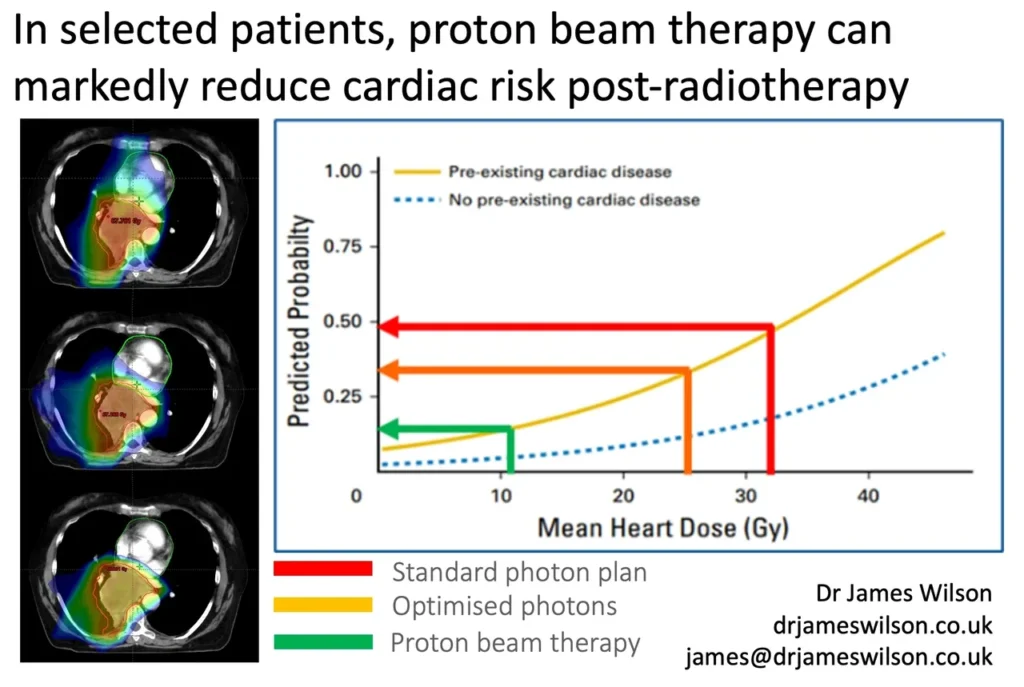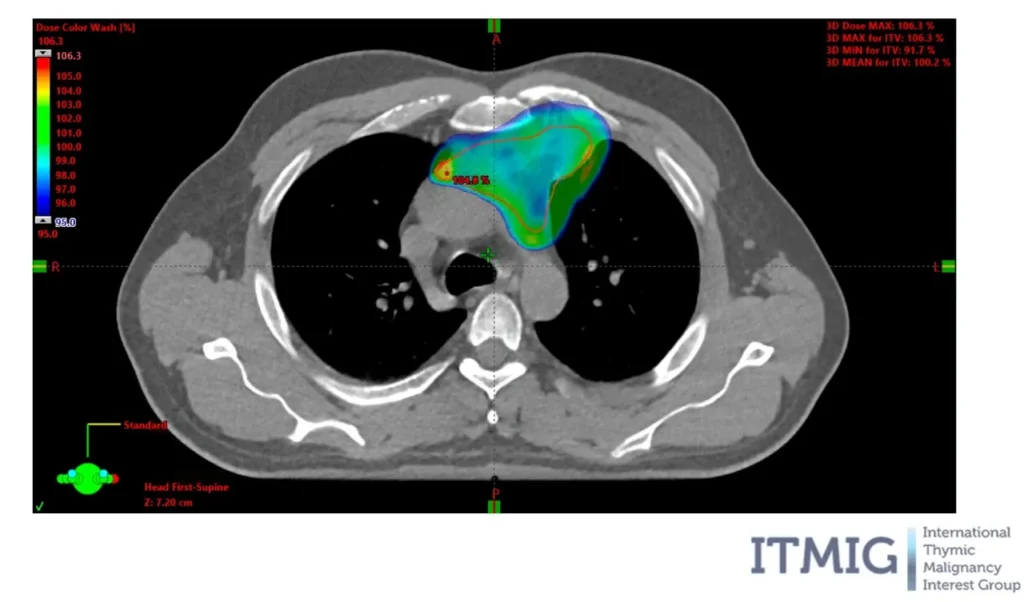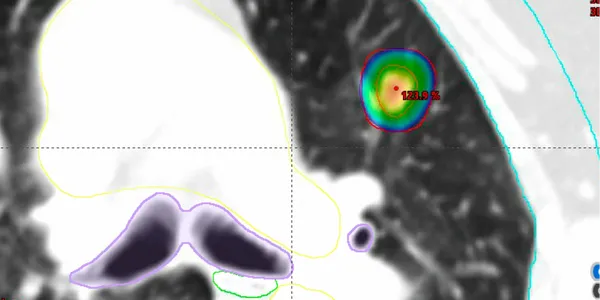I received a couple of questions about one of my slides on a previous post.
This is an early result from some work I’ve been doing with University College London Hospitals NHS Foundation Trust looking at how we can improve cure rates following radiotherapy for #lungcancer
Here we’ve tried two different ways or reducing the radiation dose received by the heart. You’ll see that #protontherapy can significantly reduce the radiation dose received by the heart. If we put the amount that the dose can be reduced on to a risk prediction method from Robert Dess at the University of Michigan, you’ll see that the risk of a major cardiac event could be reduced to less than half in selected patients if they received proton beam therapy.
This is a treatment I can offer to private patients at Proton International London. We have some way to go before we can offer this treatment routinely to NHS England patients, but we’ll keep seeking out the evidence required to make this potentially life-saving treatment available to everyone.
I gave a talk at MSKCC recently about a part of my job that I consider to be as much an art as it is a science – post-operative radiotherapy for thymoma.
As our radiotherapy delivery gets more precise, the accuracy of the target becomes even more important. This ‘art’ comes from the expertise of the oncologist, thorough communication with the thoracic surgeon, and excellence in histopathology. MDT working at its best!
Thymomas are a rare cancer, but tend to occur in a younger age group, so the risks of secondary malignancy or radiation-associated heart disease need to be considered. My personal opinion is that proton beam therapy needs to be considered for every patient receiving adjuvant radiotherapy for thymoma.
Thanks to ITMIG for always championing the cause of this underrepresented patient group.
Stereotactic Ablative Radiotherapy (SABR) is a cutting-edge treatment for lung cancer that delivers highly precise radiation therapy to tumours in the lungs. Unlike traditional radiation therapy, which may require numerous sessions, SABR delivers a concentrated dose of radiation in just a few sessions, often as few as one to five.
During SABR, advanced imaging techniques are used to precisely locate the tumour in the lung. The radiation beams are then carefully directed at the tumour from multiple angles, ensuring that the cancer cells receive a high dose of radiation while minimising exposure to surrounding healthy tissue.
SABR is an excellent option for patients with early-stage lung cancer who may not be candidates for surgery due to other medical issues. It offers a non-invasive alternative that can effectively destroy cancer cells while preserving lung function.
Overall, SABR is a targeted and efficient treatment option for lung cancer, offering patients hope for better outcomes with minimal impact on their daily lives.
How is SABR for lung cancer given?
SABR for lung cancer is typically administered using cutting-edge treatment machines like linear accelerators (Linacs) or CyberKnife systems. These advanced devices offer precise targeting capabilities, minimising radiation exposure to healthy tissues while effectively treating the tumour. LINACs, widely used for SABR, employ high-energy X-ray beams shaped to match the tumour’s contours from various angles. The CyberKnife systems utilise robotic technology to deliver radiation beams with exceptional accuracy from multiple directions. Both LINACs and CyberKnife systems can deliver the high radiation doses necessary for SABR while prioritising patient safety and comfort.

CyberKnife and Linacs can be used for SABR
How are central lung tumours different?
Central lung tumours pose unique challenges due to their proximity to critical structures like the trachea and main bronchi. However, recent advancements in radiotherapy techniques have paved the way for more precise and targeted treatments, minimising, but not eliminating, the risk of collateral damage to healthy tissue.
Conclusion
As the landscape of cancer care continues to evolve, SABR remains a cornerstone of modern oncology, offering new hope and possibilities for patients facing lung cancer treatment.
Any questions?
Call me on 020 7993 6716 or email Carol to set up on appointment at info@drjameswilson.co.uk
Essential reading:
Tekatli H, Giraud N, van Eekelen R, Lagerwaard FJ, Senan S. Ten years outcomes after SABR in central and ultracentral primary lung tumors. Radiotherapy and Oncology. 2023;188:109848.


